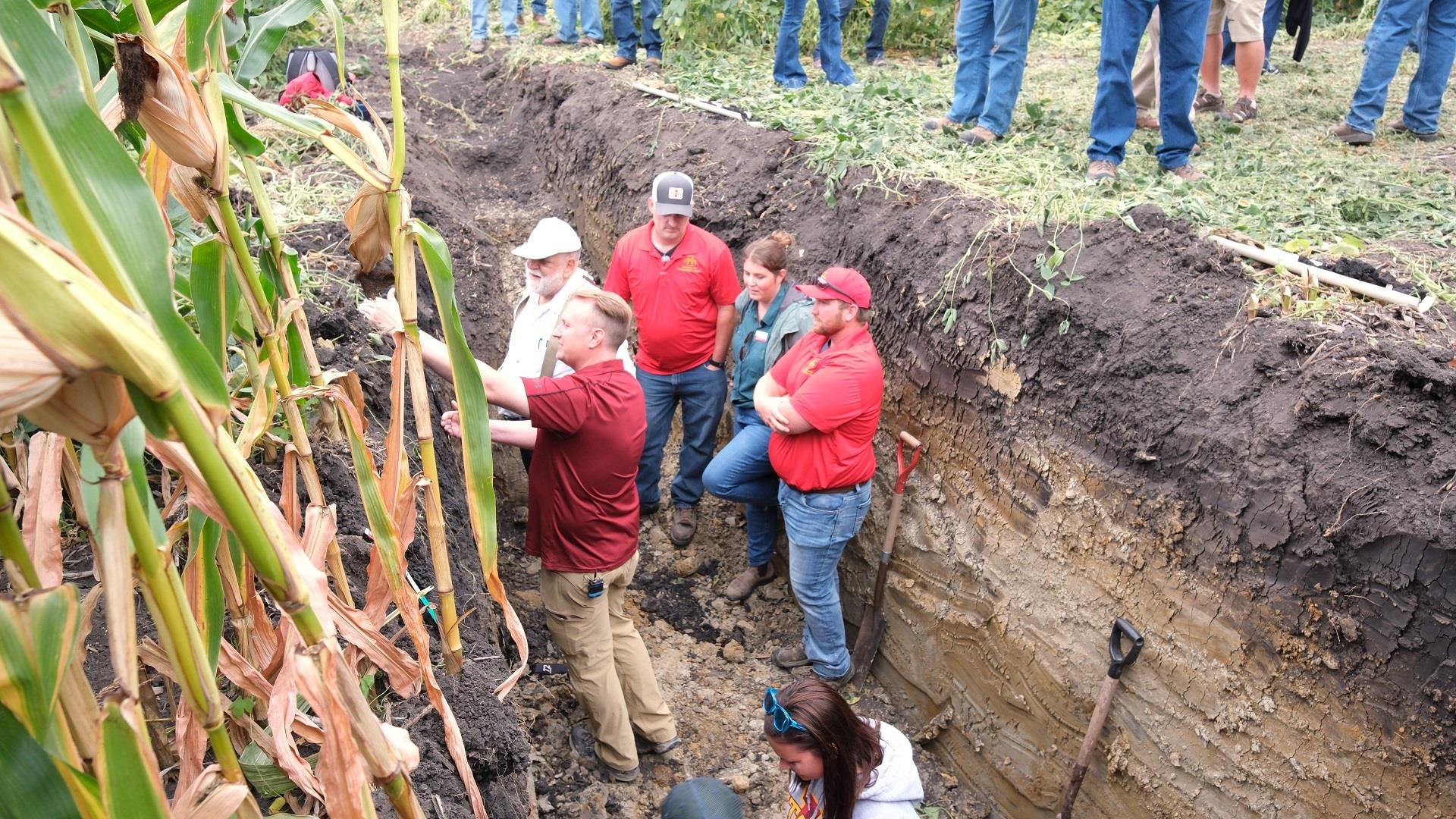As farming for carbon credits gains traction across the agricultural landscape, farmers and soil conservationists need easy-to-understand benchmarks to measure and monitor carbon. An Iowa State University team is poised to help.
The group will lead training for a process to measure and monitor soil carbon stocks as part of a new national program meant to provide a basis for financial assistance to farmers and landowners who adopt climate-smart conservation practices. The Iowa State “Know Your Carbon Landscape” project will also gather data to support carbon-related research and education at demonstration sites in the Midwest that are part of a Long-Term Agroecosystem Research (LTAR) network coordinated by USDA’s Agricultural Research Service.

At a recent field day hosted by the Southeast Research and Demonstration Farm, Bradley Miller and other Iowa State University soil scientists discuss land resources with farmers and answer questions about soil organic matter, compaction and soil water storage. Photo by Brent Pringnitz, Iowa State University Extension.
“Our first goal is to improve the consistency of carbon measurement by training farmers and conservation professionals in the application of the Natural Resource Conservation Service’s Conservation Evaluation and Monitoring Activity 221 protocol for soil organic carbon stock monitoring,” said Bradley Miller, associate professor of agronomy and leader for the interdisciplinary project at Iowa State. “We’ll be teaching a method people can use to determine how, what, when and where to measure carbon levels.”
Miller acknowledges that questions continue about how to best measure and track carbon forms and changes over time.
“As science advances, there are likely to be modifications,” he said. “However, the new NRCS standards give us a good starting point, which landowners and farmers can use now to better understand the carbon in their soils and qualify for related conservation program benefits. We are excited to help get this program underway.”
The project’s plans for outreach and education include a website, print and online materials and videos, and field events for farmers and conservation professionals, primarily at the LTAR demonstration sites.
The $2 million project is part of a four-year soil carbon partnership to expand measurement and monitoring of soil carbon on working agricultural lands. Iowa State is one of four institutions in different regions selected by the USDA National Institute for Food and Agriculture to support coordination of national efforts for greenhouse gas accounting. The other regional partners are Michigan State University, American Climate Partners and the University of Texas at El Paso.
At Iowa State, the project team includes Amber Anderson, associate teaching professor; Lee Burras, professor; Marshall McDaniel, associate professor; and Michael Thompson, professor, all in the Department of Agronomy; and Angela Rieck-Hinz, agriculture and natural resources extension specialist in Extension and Outreach. Thanos Papanicolaou, laboratory director at the USDA ARS National Laboratory for Agriculture and the Environment, will coordinate the LTAR work with NLAE scientists Ken Wacha, Dan Olk and John Prueger.
This project will provide a quantitative tool to assess soil organic matter sequestration potential and soil health, according to Papanicolaou. “We will work with NRCS field offices and several LTAR locations across the central region to identify representative areas for carbon assessments and develop risk management tools for farmers and ranchers who want to participate in voluntary carbon programs. Such network-wide projects allow scientists from many disciplines to develop novel data-driven methodologies at regional to national scales. The LTARs will be the playground for ground-truthing our approach and developing educational and outreach strategies to engage with producers and other stakeholders.”
Anderson will lead the development of teaching resources for the project. “We expect the potential for conservation program benefits will encourage interest,” she said. “More importantly, we hope this program will foster landowner appreciation for the value of the soils they manage and awareness that soil properties are more variable and dynamic than many have realized.”
“So much depends on soil,” she continued. “It serves many functions, yet so often, we take it for granted.”
Source : iastate.edu